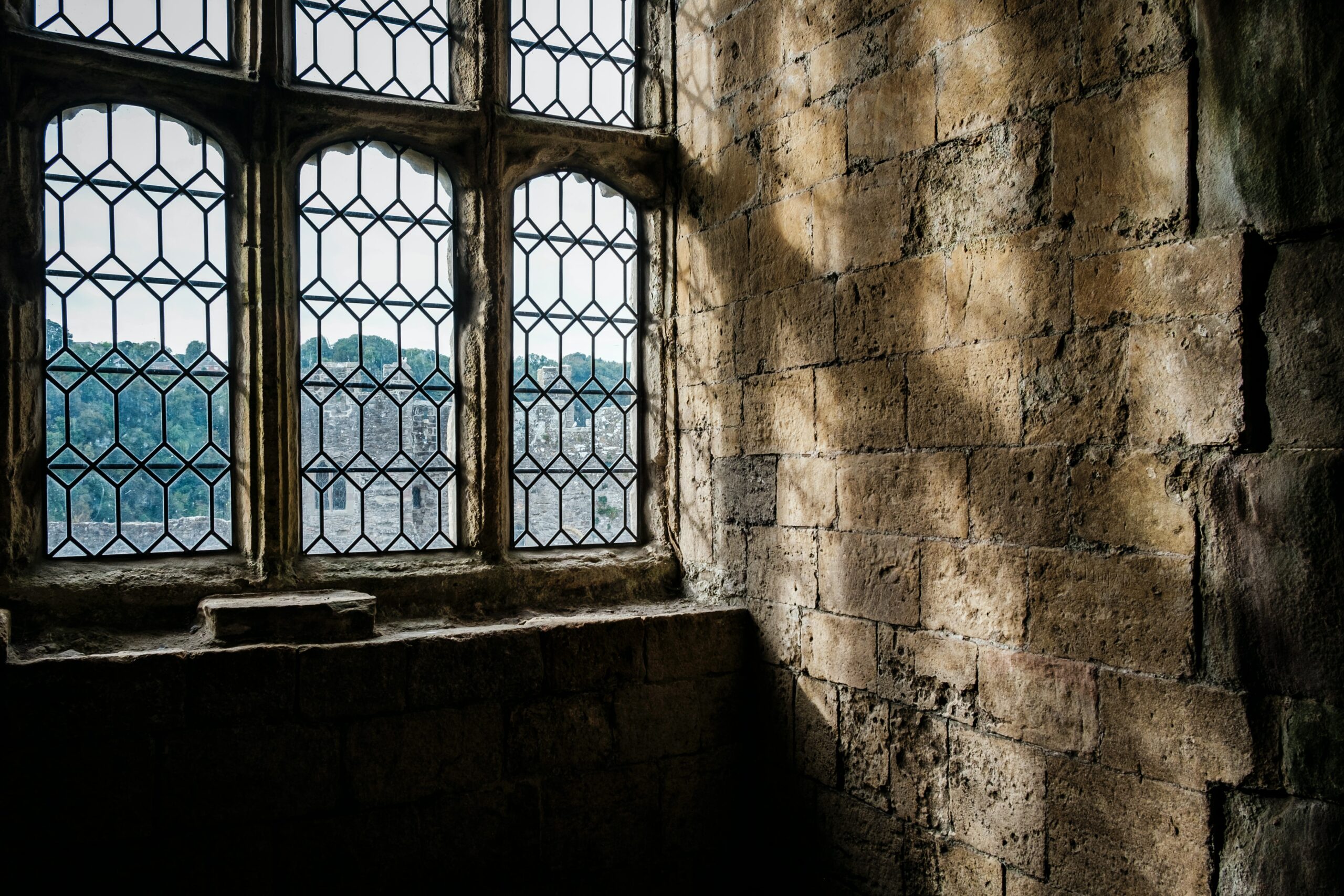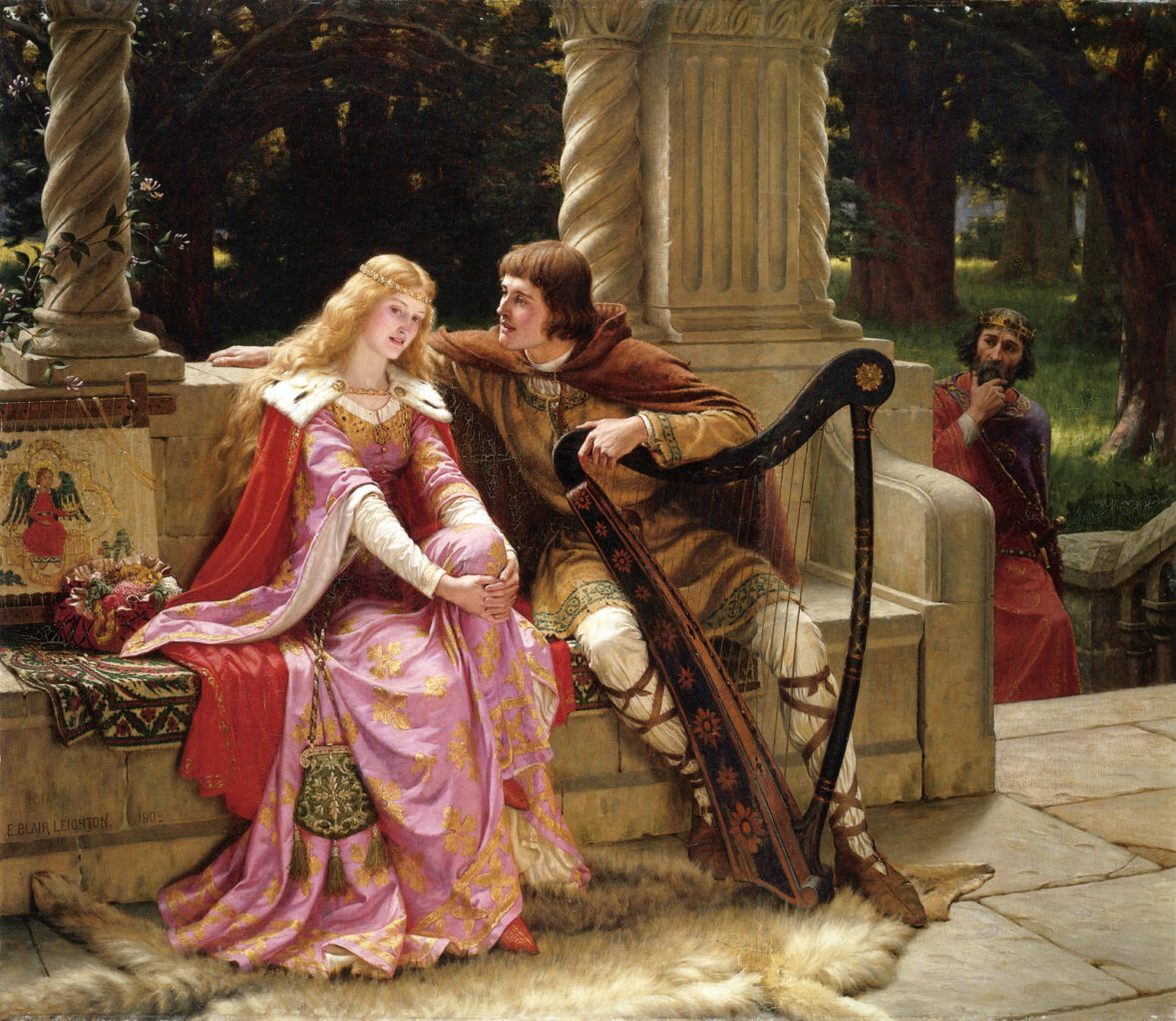Abigail Lawson has spent much of her adult life travelling and relocating to different parts of the world. Raising her two young children in the Middle East and working as a photographer, she has travelled from countries such as the United Arab Emirates to Greece and Italy to Croatia, capturing weddings for clients around the globe. Abigail has recently returned to Canada after a 12-year hiatus from her studies. A Mediaeval Studies major, she is presently writing her senior essay on the exploration of practical mediaevalisms and their application in the classroom, examining how they might be presented to a student audience.
Courtly Love and the “Chick Flick”
“Lancelot followed her with his eyes and heart until she reached the door; but she was not long in sight, for the room was close by. His eyes would gladly have followed her, had that been possible; but the heart, which is more lordly and masterful in its strength, went through the door after her, while the eyes remained behind weeping with the body.”
Chrétien de Troyes, Lancelot, The Knight of the Cart
The label “chick flick” has been used to characterize a particular film genre for as long as I can remember. The pithy designation is recognizable and some might perceive it as a tad reductive, but I have to admit I love a good chick flick. The films offer escapism—a departure from societal norms—depicting romance through a utopian and often implausible lens. The premise of one film in the genre is typically a carbon copy of the following: handsome boy meets beautiful girl, boy and girl fall in love, unforeseen obstacle stands in the way of said love, a battle is fought and won, and the couple live happily ever after.
Although the idea of romance has evolved since the Middle Ages, many people genuinely believe that Cupid’s arrow will strike, and fate will bring them to their soulmate. We love dreaming of a fairytale ending. When that initial spark inevitably fizzles, some believe—sadly—that it must be over. Many of us are searching for that glittery romance repeatedly depicted on screen and in books —ignoring the possibility that this may only exist in fiction. Many men struggle with a hero complex and believe that to be respectable and worthy, they must “save” the woman they love—her knight in shining armour. Women today share more equality with their romantic partners, and finding a woman who needs—or better yet—wishes to be saved by a man can present challenges.
When considering medieval romance and its relationship to modern romance, it is evident that the game has changed; however, the feelings associated with love and romance have not. Romance is depicted as attractive, scary, and even magical in the modern world—just like an excellent medieval romance: “Love without fear and trepidation is fire without flame and heat, day without sun, comb without honey, summer without flowers, winter without frost, sky without moon, a book without letters” (Chrétien de Troyes, Cligès).
Romance, interestingly, has not always been a thing. It stemmed from the mediaeval concept of Courtly Love. The romance was a genre of high literary culture which blossomed in the 12th-century courts of the romance super-fan, Queen Eleanor of Aquitaine. Courtly love, or fin’amor, highlighted nobility and chivalry, following a set of codes and behaviour for ladies and their lovers. Today, these notions exist in our minds with lines such as “Chivalry is not dead!” In romance literature, knights performed extravagant bravery and gallantry for idyllic ladies above their station. Within the narrative of mediaeval romance, we see idealized gender roles through stories rife with overt masculinity and impossibly high standards of beauty and innocence. The patterns of masculinity perhaps unlock mysteries of the past while explaining why the courtly tradition of the chivalric hero is not only very much alive but perhaps here to stay.
Courtly love was never fixed but always unpredictable because Cupid, the God of Love, often initiated it and not the lovers themselves. The epic tales were wonderfully cheesy—often heart-wrenching—depicting undying love, magic and romance. Is it possible that courtly love is to blame for our idealized perception of love? Although today we use words such as courtship, chivalry and romance, somewhere over the centuries our wires have been crossed because the mediaeval poets who first wrote tales of love and chivalry would likely find our notions of romance very different. Literary works from authors such as Chretien de Troyes, Marie de France, Geoffrey Chaucer, and Andreas Capellanus present a unique perspective on social dynamics found within Arthurian courts in the Middle Ages.
Did these stories represent escapism? Probably. The medieval world left little space for a true love story; perhaps the nobility’s only connection to romance was through fiction and fantasy, as courtly love was not associated with marriage. The constraints of a loveless marriage, favouring financial practicality over love, were conceivably a preoccupation found within courts. The confines of society dictated whom one married; therefore, the nobility was left to love from afar. As Andreas Cappellanus stated in rule number one of his Rules of Love, “Marriage is no excuse for not loving.”
Today we pursue a relationship to fall in love and share a bond with our romantic partner; in contrast, mediaeval tales of romance rarely expected their true love to reciprocate. We often associate love and romance with flowers, doves, and heart-felt gestures of devotion—or for this medievalist—stories of brave knights such as Lancelot and his catastrophic love affairs with Queen Guinevere. Our distorted associations with romance could be in part thanks to mediaeval courtly lovers and their impossibly romantic prose.
Have these tales tainted how we connect and identify with love and place undue pressure on the idea of finding “the one” and “living happily ever after”? One thing is sure: the romance genre—both mediaeval and modern—reflects our insatiable human desire to connect with the excitement and mysteries of love and passion.
Read other InsightOut posts.


